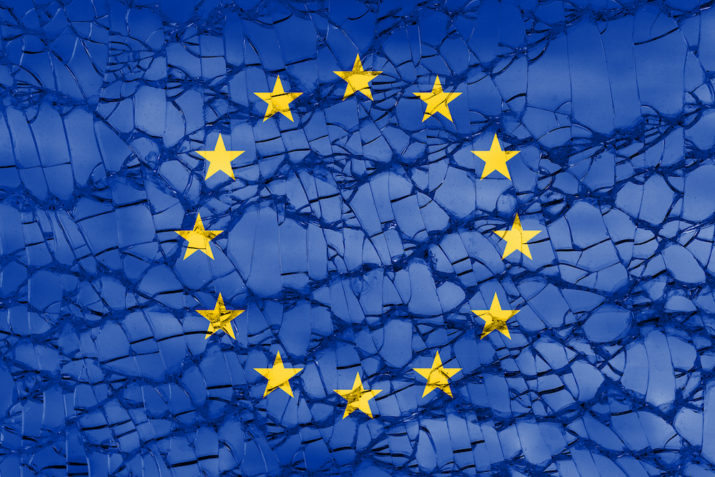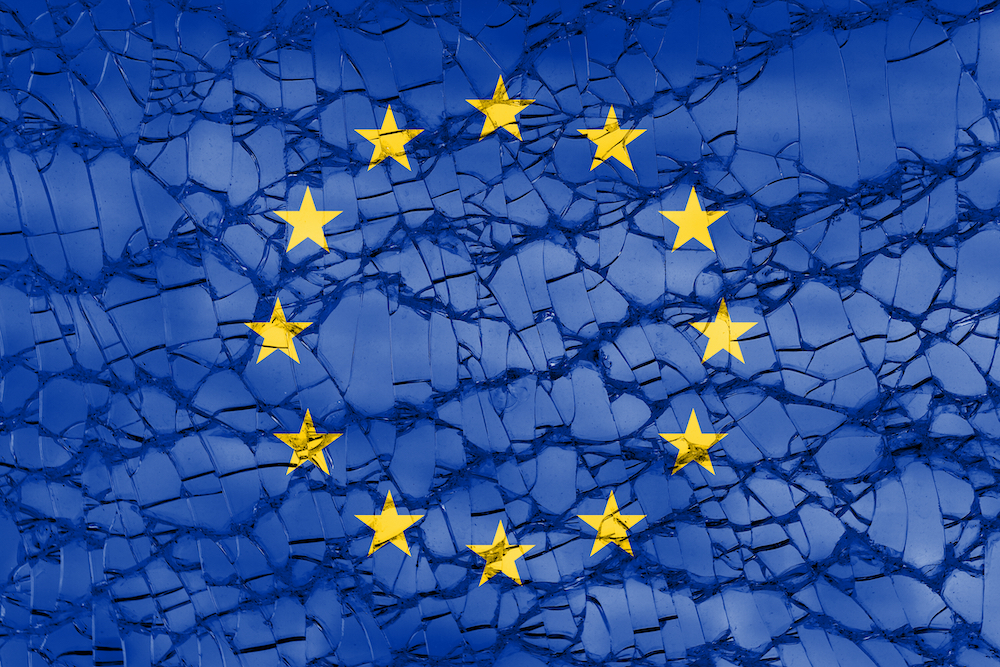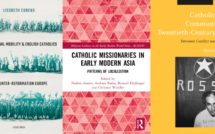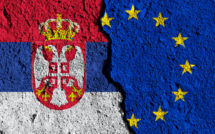

This is part of our special feature, Imagining, Thinking, and Teaching Europe.
This is part of our roundtable on European Integration.
On March 25, 2017, the European Union (EU) celebrated the 60th anniversary of the Treaties of Rome, which established “an ever closer union” as a fundamental principle for regional integration. On March 29th, 2017, the UK delivered the official letter triggering Article 50 of the Treaty of Lisbon demanding its withdrawal from the Community, which effectively happened on January 31, 2020. Is EU’s future doomed to more integration or disintegration? Whereas regional integration means a process of deeper cooperation through common rules and institutions, disintegration refers to any setback concerning a degree of integration already achieved. By and large, European integration is widely pointed out as the most advanced experience in terms of collective action strategies and, therefore, serves as a model for studies on regionalism and interstate cooperation. Although Europe is a continent historically marked by wars and numerous clashes and characterized by enormous social and cultural diversity, the European integration process suggests that cooperation around commons goals is not only possible, but also desirable in a globalized world.
Integration theories explain the framing and development of European communities based on the assumption of an alternation between periods of enhanced cooperation and moments of slowdown and/or stagnation. In addition, in the European integration process, some Member States have been granted opt-outs not to participate in certain European Policy Areas in a process of internal differentiation, such as the UK and Denmark regarding the European Monetary Union. Those countries kept their currencies and were not obliged to adopt the Euro. In this vein, it is important to distinguish opt-outs from disintegration. While the first refers to a differentiation process in which some states can decide not to move forward into a deep integration—the latter means a setback in relation to the current status quo when some powers revert from the Community to the national level. In other words, the fact that both the UK and Denmark have not adopted the Euro as their currency is an example of opt-out, whereas, if Greece had left the Eurozone after the crisis and returned to its currency, it would be a case of disintegration, as the country was already part of this European policy. Setbacks in integration already achieved can be seen as a process of disintegration. Thus, both integration and disintegration are not specific outcomes, but relative positions in relation to an earlier stage of interstate interaction.
Centripetal and centrifugal forces interact at all times to shape the EU (dis)integration process. While interstate interdependence, particularly in the economic dimension, works as a centripetal force and a driver for more integration, the level of politicization and divergences among the Member States may function as a centrifugal force and an obstacle for further integration outcomes. For example, the fact that the six founding Member States had developed a technical cooperation in the European Coal and Steel Community (ECSC) since 1951 increased their interdependence pushing them forward to create the European Economic Community (EEC) and the European Atomic Energy Community (Euratom) in 1957. Although the UK was invited to take part in both initiatives, the British government declined due to divergences regarding the project’s main goals of political and economic integration and the politicization of the sovereignty issue. In sum, when centripetal forces surpass centrifugal forces, an integrative momentum flourishes. Reversely, disintegration claims usually emerge when centrifugal forces exceed centripetal ones, as in the case of Brexit. In this sense, both integration and disintegration processes should be seen as a cumulative causal model of centripetal and centrifugal forces that frame the EU’s institutional developments. Sometimes, it will strengthen integration dynamics and, sometimes, it will open space for countervailing disintegration movements.
Besides those conditions that could foster or hinder the European integration, there are also some specific constraints of the twenty-first century, as pointed out by the then President of the European Council in 2017. Donald Tusk stated that the threats faced by the EU at that time were far greater than those at the time the Treaties of Rome were signed. He identified three main areas of concern (European Council 2017). The first one consists of the new geopolitical situation of the international system, with the consolidation of a more assertive China, the strengthening of Russia, the continuous conflicts in Africa and the Middle East, the proliferation of terrorism and the unpredictability of the US government under Donald Trump’s leadership. The second one is characterized by the emergence of nationalist, Eurosceptic, and/or xenophobic movements in several Member States of the EU, such as Hungary, Poland, Austria, and Italy, among others. In 2017, even the Franco-German axis witnessed the rise of these movements with French presidential candidate Marine Le Pen proposing a referendum about the French withdrawal from the EU (Frexit). While Le Pen won a third of the votes in France in the second round of presidential elections, in Germany, for the first time since 1945, an extreme right-wing party gained representation in the Parliament when the Alternative for Germany (AfD) party won 12.9 percent of the votes and became the country’s third largest political force. Finally, the third area of concern includes the disbelief of the pro-European elites in the political integration of the Community and in the defense of democratic liberal values. The first threat can be seen as a centripetal force that forges the need to collectively strengthen the EU in dealing with the instabilities arising from the international conjuncture. The second threat can effectively be seen as a case where centrifugal forces favor disintegrating tendencies. Finally, the role that European political elites―both officials of the EU and of the governments of Member States―will play could be decisive in the reformulation of the European Community project. Indeed, the twenty-first century brought new challenges to the European Union in the face of several crises, such as:
- The negative effects of the 2008 global financial crisis―especially in the Eurozone countries
- A growing flow of immigrants, and an increasing number of refugee requests
- The expansion of nationalist and Eurosceptic movements and parties both in the national states and within the European Parliament
Since 2016, the EU has also been dealing with the United Kingdom’s withdrawal. In sum, these crises contribute to rethinking the European Union’s project and the future of its integration process. Before the Brexit referendum, disintegration theories did not offer much room for discussion inside EU institutions and among scholars or specialists in the European Union. From then on, it seems that disintegration approaches have gained ground intending to account for this unprecedented process. Now, even the European Commission―the supranational institution and the “guardian of the treaties” ― considered alternatives of less integration in its “White Paper on the Future of Europe: Reflections and scenarios for the EU27 by 2025” published on March 2017 as a reaction to the Brexit vote. The White Paper proposes a range of alternatives for the EU27 to respond to the current challenges and opportunities after the UK’s withdrawal. The main idea is to start a debate on rethinking the European project for the future, as stated by the then European Commission’s President Jean-Claude Junker (European Commission 2017). In this document, the European Commission (2017) outlined five tentative scenarios for the EU, varying from broad to narrow institutional and political integration, as listed below:
- “Carrying on”
- “Nothing but the single market”
- “Those who want more do more”
- “Doing less more efficiently”
- “Doing much more together”
The propositions are just illustrative scenarios to promote the discussion about the future of integration. Even though they do not correspond to detailed plans or defined policies, they can be classified along a spectrum ranging, on the horizontal axis, from uniform to differentiated, and, on the vertical axis, from integration to disintegration (Figure 1). The adjective “uniform” characterizes the standard processes by which all States follow the same patterns of integration or disintegration. The adjective “differentiated” characterizes specific adaptations, which diverge from the regular patterns of integration and disintegration, adopted to better accommodate Member States’ needs.
Figure 1: Scenarios for European (dis)integration future

Source: elaborated by author based on Schimmelfennig (2018)
Figure 1 illustrates the position of each White Paper scenario for European (dis)integration futures. The first scenario corresponds to the maintenance of the status quo in the current integration model, with some countries maintaining their acquired opt-outs. It stands between the progress of the uniform integration—“acquis communautaire”[1]—(upper-right quadrant) and the differentiated integration (upper-left quadrant). The second scenario—in the fourth quadrant at the extreme right of uniform disintegration—depicts a general setback from a previous level of integration. In this case, states decide to stop working as a Community in the promotion of European policies in areas such as migration, security, and defense. Furthermore, some powers and competences return to the national level strengthening intergovernmentalism. Divergences would be resolved predominantly at the bilateral rather than supranational level and cooperation within the EU framework would be limited and focused on the single market.
The third scenario, in the upper-left quadrant, corresponds to a “multi-speed” Europe where states would be allowed to work on convergent policies to deepen integration in specific areas, such as defense, taxation, or social matters, similarly to the Enhanced Cooperation procedure. In practice, this phenomenon of differentiated integration has already occurred at different moments in European integration, with greater flexibility regarding the deepening of integration and the concession of opt-outs. The Schengen Area, for example, began in 1985 as cooperation among some European states. Separated from the Community framework, they decided to adopt a common visa policy and abolish border controls among them. This policy was then incorporated into European Union law through the Amsterdam Treaty in 1997. At that time, both the United Kingdom and Ireland were granted an opt-out from the Schengen Area and were not obliged to take part in it.
The fourth alternative presented, in the lower-right quadrant, dubbed “doing less more efficiently,” means that the EU should choose some priority areas in which to invest. The EU criteria must be directly related to its capacity for implementing and enforcing common policies. This scenario could also represent a slightly uniform disintegration, as some policy areas already regulated by the EU could return to the national governments. In other words, it involves EU institutions concentrating their efforts and resources in areas where it is feasible to move faster, such as innovation, trade, security, and migration, to the detriment of those where it has a limited added value, as public health, regional development, and social policy. Finally, the fifth scenario is a utopia. It lies at the edge of uniform integration in the upper-right quadrant, corresponding to meaningful progress through the Member States’ decision to work together to deepen regional integration and reaffirm the principle of supranationalism. The central idea is to move forward in all areas of integration so that the European Union is recognized as a new model of political and social organization that goes beyond national borders.
The scenarios described in the White Paper do not consider the lower-left quadrant, which corresponds to cases of both internal and external differentiated disintegration. Internal differentiated disintegration relates to Member States’ demands to bring powers and competences from the European Union back to the national level, while they remain part of the Community. The Greek’s withdrawal from the Eurozone would have been an example, if it had happened. External differentiated disintegration implies triggering Article 50 of the Lisbon Treaty, when a Member State voluntarily decides to exit the European Union and to negotiate a new relationship with the Community. As an illustration, the UK-EU February 2016 negotiations were an attempt to accommodate British demands inside the EU institutional body, by moving towards an internal differentiated disintegration and granting the UK a “special status” to avoid an external differentiated disintegration—Brexit. However, it did not work as expected.
In sum, the five scenarios presented in the White Paper show that previous EU studies and—most importantly—the official documents of the European institutions have focused much more on alternatives towards further integration than on possibilities for disintegration. To some extent, the result of the British referendum brought more pragmatism to European studies, as well as to the European Commission that came to consider disintegrating possibilities. Altogether, the first and third scenarios are the most viable in the short and medium terms, considering the current crises faced by the European continent—the spread of Euroscepticism, nationalism, populism, and Brexit, as well as possible demands for an internal differentiated disintegration. There is no great incentive for countries to seek greater collective intensification of integration, and several Member States, like Hungary and Austria, might file objections to it, due to domestic constituencies affiliated with Eurosceptic and nationalist movements. Indeed, European integration has never been homogeneous or uniform. Thus, the more complex the European Union becomes, the more it seems to be doomed to differentiation, whether in integration or disintegration.
Angélica Szucko is a Ph.D. candidate in International Relations at the University of Brasília (UnB) with a scholarship supported by the Brazilian Federal Agency for Support and Evaluation of Graduate Education (CAPES) within the Ministry of Education of Brazil. Her research focuses on UK-EU relationship and the paths that led to the Brexit process. She is currently doing a doctoral Internship at Université Sorbonne Nouvelle -Paris 3.
References:
European Commission. 2017. White Paper on the Future of Europe: reflections and scenarios for the EU27 by 2025. March 1st, 2017. https://ec.europa.eu/commission/sites/beta-political/files/white_paper_on_the_future_of_europe_en.pdf
European Council. 2017. “United we stand, divided we fall”: letter by President Donald Tusk to the 27 EU heads of state or government on the future of the EU before the Malta summit. Press Release. January 31st, 2017. https://www.consilium.europa.eu/en/press/press-releases/2017/01/31/tusk-letter-future-europe/
Schimmelfennig, Frank. 2018. “Brexit: differentiated disintegration in the European Union”. Journal of European Public Policy: 1-20. https://doi.org/10.1080/13501763.2018.1467954
[1] The “acquis communautaire” or EU’s “acquis” is the body of common rights and obligations that are binding on all EU countries. For more information, see: https://eur-lex.europa.eu/summary/glossary/acquis.html
Photo: Flag of EU with shattered or cracked glass texture – europe crisis breakup or disintegration concept | Shutterstock
Published on June 3, 2020.




